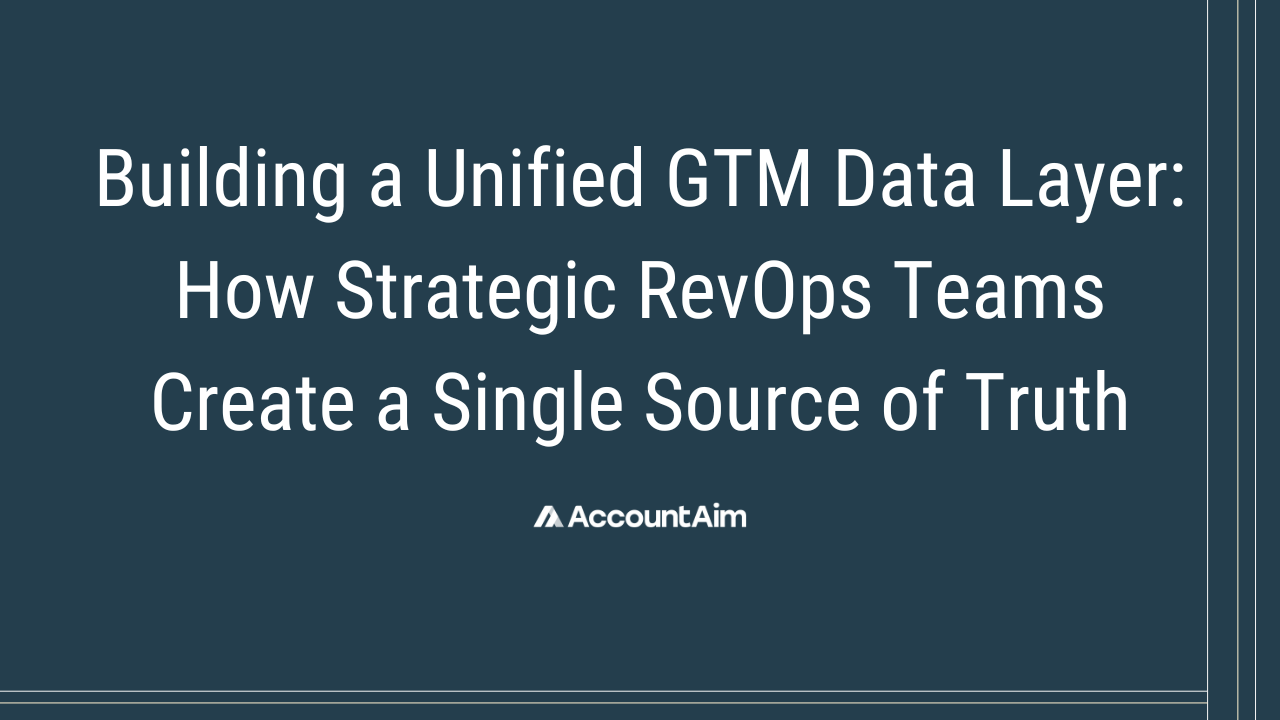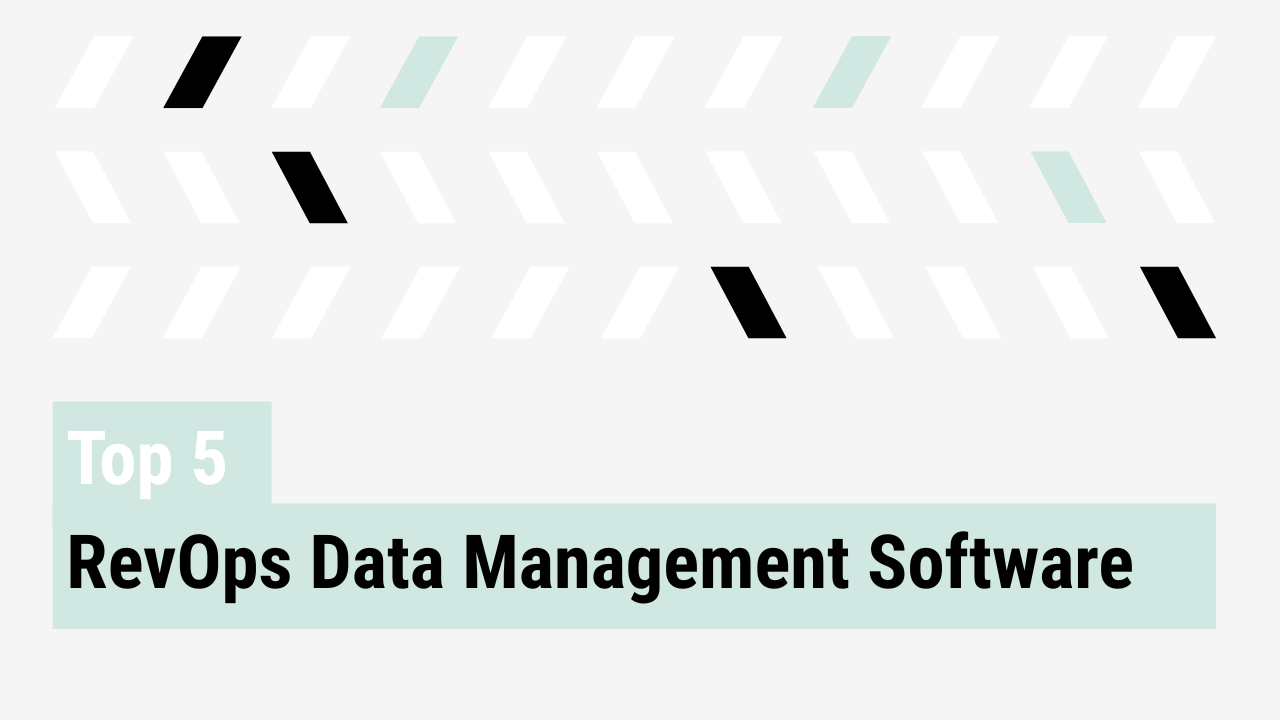The fragmentation problem
Too many go-to-market teams operate with incomplete or conflicting data. Sales, marketing, and customer success each run their own systems, often with different definitions, metrics, and views of the customer. The result is misaligned strategy, redundant outreach, and pipeline gaps that could have been prevented.
Strategic RevOps leaders are addressing this by consolidating fragmented data into a unified layer: a shared source of truth that aligns teams, drives accountability, and supports focused execution.
Why a unified data layer matters
Without a common data foundation, even well-aligned teams struggle to execute effectively. A unified GTM data layer makes it possible to:
- Standardize metrics across the revenue funnel
- Consolidate signal data from multiple platforms into one view
- Support accurate forecasting and scenario modeling
- Enable alignment and accountability across GTM functions
With shared data, execution becomes faster and more consistent.
How high-performing RevOps teams are building it
Leading teams integrate tools, streamline workflows, and put governance in place to make unified data a reality. They consolidate dashboards, unify campaign and event data, replace manual reporting with automation, and connect CRM, MAP, and product usage signals into one interface.
High-performing RevOps teams typically unify CRM data (from platforms like Salesforce or HubSpot), marketing automation insights (from Marketo or HubSpot Marketing Hub), and product usage signals (from tools like Pendo, Mixpanel, or Segment) into a single GTM data layer. This foundation enables seamless alignment across sales, marketing, and customer success.
This allows for accurate territory planning by identifying gaps and overlaps in coverage, ensuring each rep is focused on the right accounts. It supports pipeline forecasting with real-time updates and visibility into stage-by-stage conversion, improving the reliability of projections. And it enhances account prioritization by consolidating firmographic, engagement, and intent data into a single view, so teams can focus their efforts where they’re most likely to convert.
The outcome is improved visibility, quicker decision-making, and more time focused on growth.
Common blockers and how to move past them
Building a unified GTM data layer comes with challenges, including data silos that slow collaboration by keeping vital information locked within departmental systems, making it difficult to align activities across teams. Inconsistent definitions across platforms and teams can lead to conflicting reports and eroded confidence in metrics, making it hard to determine what is actually driving performance. Change resistance, often stemming from entrenched workflows or fear of transparency, can further hinder the adoption of new systems and processes, stalling progress toward a unified operating model.
Overcoming these requires clear ownership, strong governance, and business-aligned rollouts. Teams that succeed define shared metrics, communicate openly, and anchor their efforts to outcomes, not just reports.
What success looks like
When a unified GTM data layer is working, you see:
- Forecasts rooted in trusted data
- Consistent metrics across sales, marketing, and CS
- Less time spent on manual reports
- Faster, more informed GTM decisions
Data becomes a foundation for execution.
The RevOps mandate
Fragmented data holds revenue teams back. RevOps leaders are in a unique position to fix this by owning the systems and structures that align people, processes, and performance. The unified GTM data layer is the backbone of that alignment.
The earlier a team builds it, the sooner it gains speed, clarity, and confidence in every GTM decision.
Learn how AccountAim can help unify your GTM data layer. Book a demo today.



